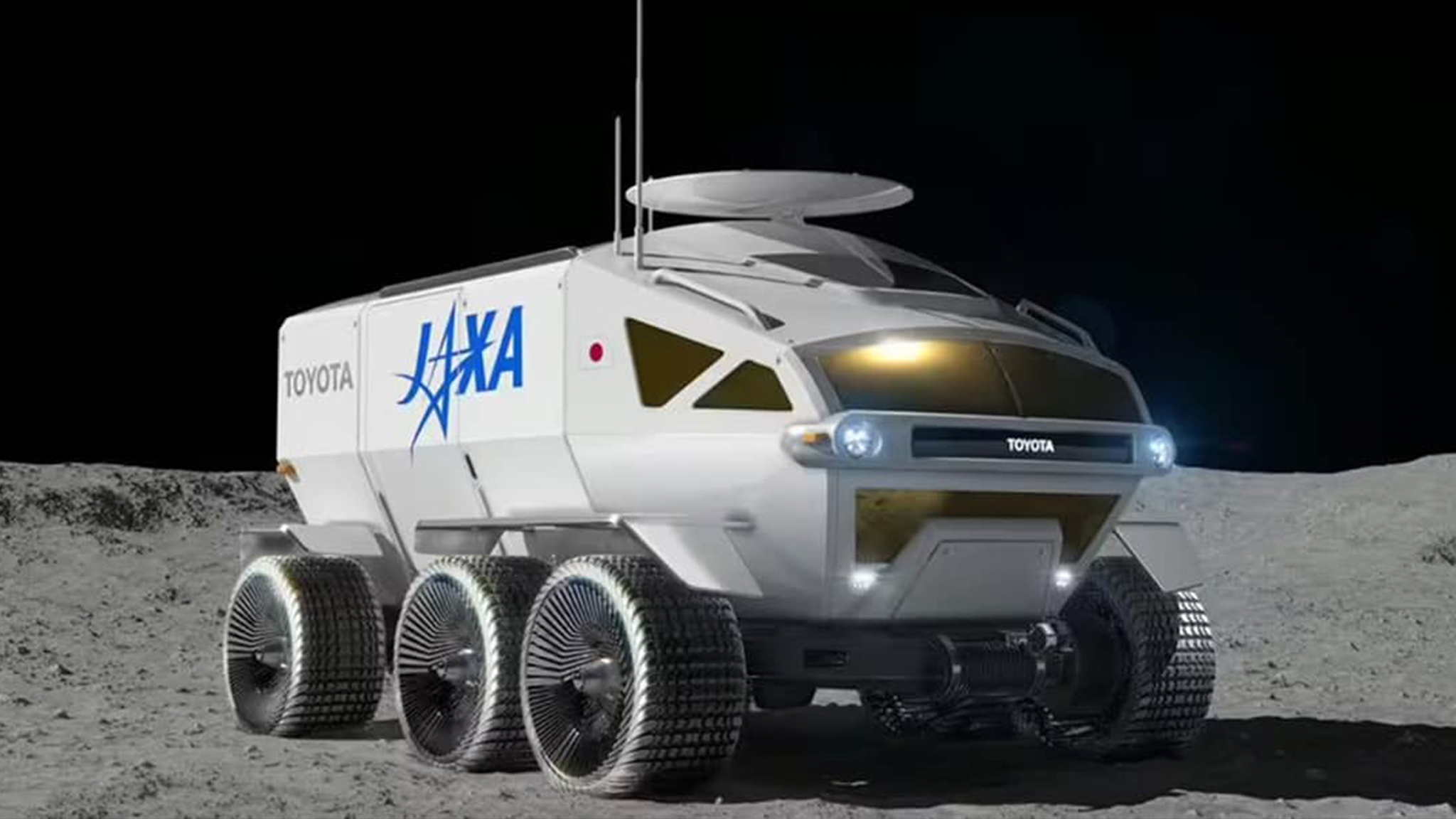There’s a long tradition of science fiction gizmos pre-dating — if not outright influencing — the technology that follows. The latest example is the Lunar Cruiser, a joint venture between Japan’s Aerospace Exploration Agency (JAXA), automotive juggernaut Toyota, and NASA.
Fans of The Martian and other near-future works of speculative fiction will recognize the general concept right away. This hydrogen-cell-powered, solar-assisted, six-wheeled, pressurized all-terrain vehicle has enough room for astronauts to live and work without the hindrance of bulky space suits.

An artist’s rendering of the Lunar Cruiser. Photo: Toyota, JAXA, NASA
“It is a mobile habitat, a lunar lab, a lunar home, and a lunar explorer,” NASA’s Bill Nelson said in a press conference this month.
A Land Cruiser for the Moon
The van, named after Toyota’s famous Land Cruiser line, will be delivered to the Moon on the Artemis VII mission in 2031. There, it will operate as a mobile base for astronauts as they explore near the Lunar South Pole for up to 30 days. Toyota, JAXA, and NASA estimate the Lunar Cruiser will have a functional lifespan of 10 years.
According to science outlet ZME Science, the Lunar Cruiser has some pretty impressive specs. These include a converter that will transform wastewater into fuel for the hydrogen cells, a spacious (by space standards) 6x5x4m body, and a range of 10,000km.
In return for Toyota and JAXA’s work on the vehicle, NASA is making room for two Japanese astronauts on an as-yet-unnamed Artemis mission.
The Artemis missions represent the first manned excursions to the moon in over 50 years. They will, as NASA puts it, “land the first woman, first person of color, and its first international partner astronaut on the Moon, make new scientific discoveries, and explore more of the lunar surface than ever before.”
Will that laudable list of firsts include the first van-life influencer video from beyond our atmosphere? It seems hard to conclude the answer will be “no.”
The Artemis III, the first of the Artemis missions to land humans on the moon, is currently slated for 2026.






